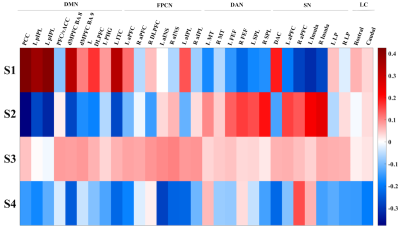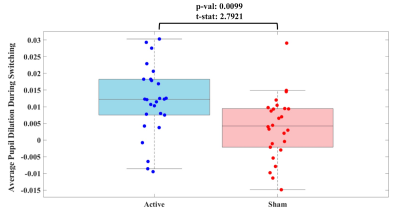Sana Hussain1, Isaac Menchaca1, Mahsa Alizadeh Shalchy2, Kimia C. Yaghoubi2, Jason Langley3, Aaron R. Seitz2, Megan A.K. Peters4, and Xiaoping P. Hu1,3
1Department of Bioengineering, University of California, Riverside, Riverside, CA, United States, 2Department of Psychology, University of California, Riverside, Riverside, CA, United States, 3Center for Advanced Neuroimaging, University of California, Riverside, Riverside, CA, United States, 4Department of Cognitive Sciences, University of California, Irvine, Irvine, CA, United States
1Department of Bioengineering, University of California, Riverside, Riverside, CA, United States, 2Department of Psychology, University of California, Riverside, Riverside, CA, United States, 3Center for Advanced Neuroimaging, University of California, Riverside, Riverside, CA, United States, 4Department of Cognitive Sciences, University of California, Irvine, Irvine, CA, United States
The results described demonstrate that locus coeruleus (LC) activation is associated with switching between brain states. Consequently, they provide potential insight into LC functionality and its relationship with latent brain states.

Figure 2. Latent brain states identified from the HMM. Compared to the other states, S1 shows increased DMN activity while S2 shows increased DAN and SN activity. S3 appears to be a transition state consistent with that presented in literature11, and S4 is prevalent during the squeeze blocks of the paradigm. DMN - default mode network; FPCN - fronto-parietal control network; DAN - dorsal attention network; SN - salience network; LC - locus coeruleus.

